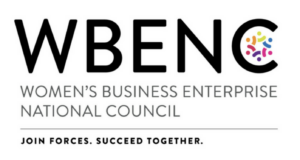Description
ESAMS provides a list of what needs to be systematized during the private school admissions process and offers our clients options for managing it.
This course involves:
An intake 1-1 session with Becky Reback to go through ESAMS and the list of what and how you will organize your school admissions process.
Digital templates, including a formatted spreadsheet, Google Docs for essays, and templates for typical school admissions communications (applicable for private nursery through high school admissions processes)
Organizing Your Time
We must manage the time we devote to this process, including our own tasks to complete, the time our children spend on the process, and the appointments with prospective schools.
We suggest you first organize your time from a macro viewpoint. Once the applications become available in August, organize what your timeline will be.
Becky Reback says, “I tend to go through each school’s application and write down a suggested timeline for my clients to follow for each prospective school. Often this timeline is not the exact one that the portal application system will suggest, instead, I try to map it out so that I consider the best interview schedule for the student, travel days for the parents, and schools that require applications early on in the process, such as Trinity School, versus schools that have a later deadline date such as Columbia Grammar and Preparatory School.”
Once you fully understand your tasks, you can work on developing your microsystems to manage the week-to-week. This is what ESAMS teaches for the microtask organization for time management:
You will want to divide up how you spend your time into the following categories:
School Visits
Learning About Schools (doing research)
Completing Applications
Writing Essays
Preparing for Interviews
Delegating Recommendations and Transcripts
Use a calendar. It can be digital or a monthly wall calendar posted where the family can see it.
Input the weekly time you plan to spend on this process (excluding the time spent visiting schools or interviewing; Think of this as “off-event” work time). We suggest one-two hours per week from early August-September, then two-three hours per week from October- November, and then back to one hour per week from December – February.
When you schedule to see a school, write down the address and determine and mark down the travel time.
You can also work ahead and write out templates of thank-you notes and save them in your drafts. Then there will be less to do after each event when it’s time to send the notes.
Organizing Your Digital Materials
Create a unique email address for this process using Gmail.
If you purchase the ESAMS course, we meet with you and organize your digital materials, providing a spreadsheet for you. The spreadsheet can be used to store all of your schools, log-in URLs, the to-dos, access templates, and links to other documents.
You can create separate Google Docs for each school’s essays and link them to the spreadsheet so you can easily get to them. You’ll want to read them before going to the interview to recall what you have already mentioned about your child, and be prepared to share fresh, new anecdotes during your conversation.
Planning Your Communications
Be sure to correspond professionally and courteously with prospective schools.
Write thank-you notes via email after events, visits, and interviews.
In January, write and send a letter of interest to your desired school(s) after you have completed your process (before notification dates in February).
The ESAMS has templates for these types of communication.






